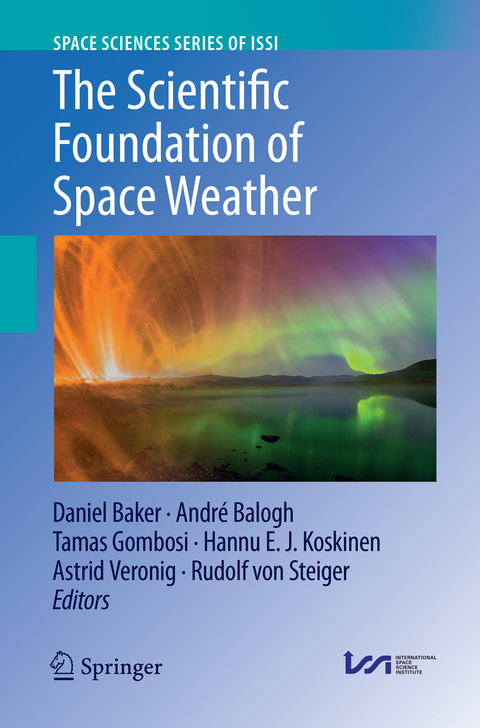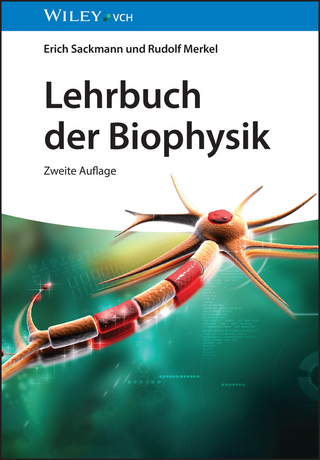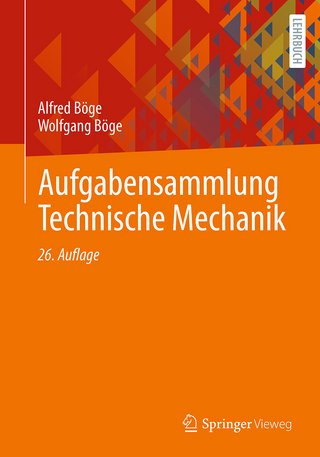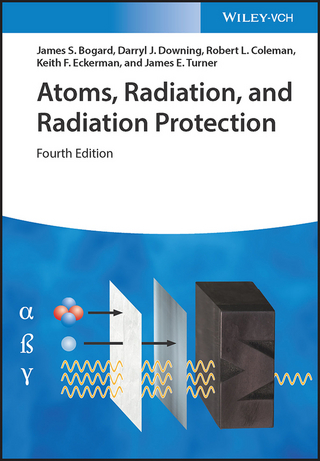
The Scientific Foundation of Space Weather
Springer (Verlag)
978-94-024-1659-6 (ISBN)
Originally published in Space Science Reviews in the Topical Collection “The Scientific Foundation of Space Weather”
Daniel N. Baker directs the Laboratory for Atmospheric and Space Physics, University of Colorado, where he is the Distinguished Professor of Planetary and Space Physics and Professor of Astrophysical and Planetary Sciences and Professor of Physics. He was Group Leader for Space Plasma Physics at Los Alamos National Laboratory (1980-87) and was Division Chief at NASA’s Goddard Space Flight Center (1987-1994). Currently, he is lead investigator on several NASA space missions, including the NASA Magnetospheric Multiscale (MMS) mission and the NASA Radiation Belt Storm Probes (Van Allen Probes) mission. He presently holds the Moog-Broad Reach Endowed Chair of Space Sciences at CU. He has edited eight books and published over 750 papers in the refereed literature. He has been recognized internationally for his interdisciplinary leadership in space and Earth sciences, as well as for outstanding research, service, and teaching. André Balogh is Emeritus Professor of Space Physics, Imperial College, London. Through his career since the 1960s, he led or participated in numerous space investigations into the physics of the heliospheric magnetic field and its interaction with the solar wind and the Earth’s space environment. As Principal Investigator of the magnetic field investigation on the joint ESA/NASA Ulysses (1990-2009) mission, he led numerous research projects to discover the dynamics and evolution of the three-dimensional heliospheric magnetic field and its connection with solar magnetism through the solar activity cycle. From 2005 to 2010, he was Director of the International Space Science Institute, where he initiated and organised a series of workshops on magnetic fields in the solar system and beyond. He has been the editor of 13 volumes in the Space Science Series of ISSI. Tamás Gombosi is the Konstantin Gringauz Distinguished University Professor of Space Science and the Rollin Gerstacker Professor of Engineering at the University of Michigan. He is founding Director of the Center for Space Environment Modeling, Professor of Climate and Space Sciences and Engineering and Professor of Aerospace Engineering. He was one of the scientific leaders of the first major international planetary mission undertaken by the Soviet Union, the Venus-Halley (VEGA) mission. Over his three-decade-long career at Michigan, he participated in a number of space missions (Cassini, Rosetta, Stereo, MMS and others). In the last two decades, he has led a highly interdisciplinary team that developed the first solution adaptive (AMR) global magnetohydrodynamic (MHD) simulation code of space plasmas and the high-performance Space Weather Modeling Framework (SWMF). Hannu Koskinen is Professor in Space Physics at the University of Helsinki. He got his PhD degree from Uppsala University (1985). He has been a co-investigator in a dozen space physics satellite instruments onboard spacecraft of ESA, Russia and Sweden studying the plasma environments of the Earth, Mars, Venus and comet P/67 Churyumov-Gerasimenko. He led one of the first ESA space weather projects, "Study of plasma and energetic electron environment and effects" (1996-1998), which was instrumental in the evolution of ESA’s space weather activities. He has worked with ISSI since 1996, this being the fifth volume he has contributed to. He is the author of the postgraduate-level textbook titled “Physics of Space Storms – From the Solar Surface to the Earth,” Springer/Praxis, 2011. Astrid Veronig is Professor in Astrophysics at the University of Graz and leads a research group on Solar and Heliospheric Physics. She is Head of Kanzelhöhe Observatory for Solar and Environmental Research, where she established a system for automatic real-time flare detection and alerting for ESA’S SSA space weather program, and is Co-Investigator on the STIX instrument for ESA’s Solar Orbiter Mission. Her main research focus is on the observational diagnostics of energy release and transport in solar flares, the initiation, early evolution and interplanetary propagation of coronal mass ejections and their space weather impact. She provided major contributions to the physical understanding of large-scale CME-associated waves, so-called “EIT waves,” and was the first to identify thick-target coronal flare loops. Rudolf von Steiger holds an MSc in theoretical physics (1984), a PhD in experimental physics (1988), and a habilitation in extraterrestrial physics (1995) from the University of Bern. He was a Co-Investigator of the Solar Wind Ion Composition Experiment (SWICS) on Ulysses and an associated scientist of the AMPTE and ACE missions. His relevant experience includes theoretical modeling of solar chromospheric processes, specifically of the FIP fractionation effect, as well as the analysis and interpretation of solar wind observations both in the Earth's magnetosheath and in interplanetary space. In 1995, he joined the newly created International Space Science Institute (ISSI) in Bern as senior scientist. Since 1999, he has been a Director there and also holds an associate professorship at the University of Bern. He serves as an editor of Space Science Reviews, Frontiers in Space Science, and Living Reviews in Solar Physics.
Achievements and Challenges in the Science of Space Weather.- Space Weather: Historical and Contemporary Perspectives.- Origins of the Ambient Solar Wind: Implications for Space Weather.- Evolution of the Sunspot Number and Solar Wind B Time Series.- The Origin, Early Evolution and Predictability of Solar Eruptions.- The Physical Processes of CME/ICME Evolution.- Acceleration and Propagation of Solar Energetic Particles.- Particle Radiation Sources, Propagation and Interactions in Deep Space, at Earth, the Moon, Mars, and Beyond: Examples of Radiation Interactions and Effects.- Geoeffective Properties of Solar Transients and Stream Interaction Regions.- The Scientific Foundations of Forecasting Magnetospheric Space Weather.- Space Weather Effects in the Earth’s Radiation Belts.- Space Weather Effects Produced by the Ring Current Particles.- Locations Where Space Weather Energy Impacts the Atmosphere.- Extreme SpaceWeather Events: From Cradle to Grave.- The Varying Core Magnetic Field from a Space Weather Perspective.- Anthropogenic Space Weather.
| Erscheint lt. Verlag | 26.1.2019 |
|---|---|
| Reihe/Serie | Space Sciences Series of ISSI ; 67 |
| Zusatzinfo | 203 Illustrations, color; 19 Illustrations, black and white; VI, 587 p. 222 illus., 203 illus. in color. |
| Verlagsort | Dordrecht |
| Sprache | englisch |
| Maße | 155 x 235 mm |
| Themenwelt | Naturwissenschaften ► Physik / Astronomie ► Angewandte Physik |
| Naturwissenschaften ► Physik / Astronomie ► Astronomie / Astrophysik | |
| Technik ► Luft- / Raumfahrttechnik | |
| Schlagworte | Corona • Coronal mass ejections • corotating interaction regions • Earth magnetic field • Solar Activity Cycle • solar flares • solar wind • Sunspots |
| ISBN-10 | 94-024-1659-5 / 9402416595 |
| ISBN-13 | 978-94-024-1659-6 / 9789402416596 |
| Zustand | Neuware |
| Informationen gemäß Produktsicherheitsverordnung (GPSR) | |
| Haben Sie eine Frage zum Produkt? |
aus dem Bereich


